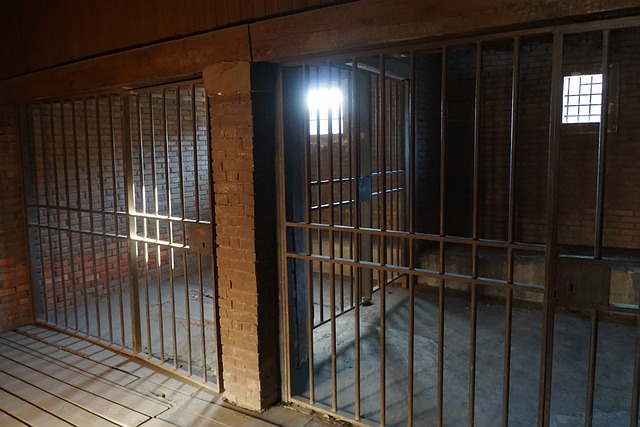DUI laws vary significantly between rural and urban areas, with rural regions facing unique challenges due to lower population densities and crime rates. Rural DUI forfeiture cases are complicated by limited legal resources, longer travel distances for court, and fewer specialized attorneys, leading to potential loopholes and less stringent enforcement. Urban areas, on the other hand, benefit from robust legal frameworks with quicker resolutions and stricter penalties, but urban citizens may face higher financial burdens. Both settings require tailored strategies; rural areas need improved legal access and community education, while urban areas address traffic volumes and data-driven policing to bridge disparities in DUI enforcement and ensure justice across diverse landscapes.
In the realm of drunk driving enforcement, significant disparities exist between rural and urban settings. This article delves into the key differences in DUI laws, with a focus on property forfeiture provisions. While urban jurisdictions often enforce strict measures, rural areas may offer unique legal defense strategies. We explore how population density impacts penalties, analyze successful challenges to DUI forfeiture cases, and contemplate the future of DUI enforcement, aiming to address these disparities comprehensively, including insights into DUI forfeiture case challenges.
- Understanding DUI Laws: Key Differences Between Rural and Urban Areas
- Property Forfeiture: How Rural and Urban Jurisdictions Handle DUI Cases
- The Impact of Population Density on DUI Penalties
- Legal Defense Strategies in Rural vs. Urban DUI Forfeiture Cases
- Case Studies: Examining Successful Challenges to DUI Forfeiture Laws
- The Future of DUI Enforcement: Addressing Disparities in Rural and Urban Settings
Understanding DUI Laws: Key Differences Between Rural and Urban Areas

In rural areas, DUI laws often differ significantly from urban regions. One notable variation is the enforcement strategy; rural police departments may employ less aggressive tactics due to lower population densities and different crime patterns. This can result in fewer traffic stops, which potentially affects the number of DUI arrests. As a consequence, rural communities might face unique challenges when it comes to raising awareness about drunk driving’s dangers and implementing stringent precautions.
Moreover, legal proceedings in rural DUI cases may present distinct issues. Given the remoteness of these areas, defendants could face longer travel distances for court appearances, impacting their ability to mount a robust defense. Additionally, limited access to legal resources and specialized DUI attorneys could complicate matters, especially if there are fewer local legal practices focusing on such cases. These factors contribute to the complexity of navigating DUI forfeiture case challenges in rural settings.
Property Forfeiture: How Rural and Urban Jurisdictions Handle DUI Cases

In rural areas, property forfeiture in DUI cases often presents unique challenges due to lower populations and less dense land use. Local governments may have fewer resources dedicated to enforcing civil forfeiture laws, leading to potential loopholes that some defendants exploit. For instance, remote locations might make it easier for individuals to avoid notice of property seizure or abandon their assets to evade legal consequences. As a result, rural jurisdictions often face the dilemma of balancing public safety with the practical difficulties of enforcing forfeiture statutes.
In contrast, urban areas benefit from more extensive legal frameworks and dedicated enforcement teams that address DUI forfeiture cases head-on. Higher population densities mean increased visibility and easier asset identification. Urban courts typically have more experienced judges and prosecutors who understand the intricacies of these cases. This results in quicker resolutions and stricter penalties, aiming to deter drunk driving behavior within densely populated regions. However, urban citizens may face higher financial burdens due to more stringent forfeiture policies.
The Impact of Population Density on DUI Penalties

In densely populated urban areas, the impact of DUI (Driving Under the Influence) laws is often more stringent due to the higher risk of accidents and potential harm to a larger number of people. The penalties for DUI offenses in cities typically reflect this, with harsher fines, longer license suspensions, and even increased jail time compared to rural regions. This disparity arises from the fundamental difference in population density and the corresponding impact on public safety.
For instance, DUI forfeiture cases in urban settings might involve more severe consequences, such as longer periods of vehicle impoundment or stricter restrictions on obtaining a driver’s license after a conviction. These measures aim to deter individuals from driving while impaired and protect the well-being of city dwellers who are more susceptible to traffic collisions due to heavy foot and vehicular traffic. Challenges to these laws often center around arguments related to proportionality, particularly when considering that rural areas may have fewer inhabitants and lower crime rates, suggesting potential disparities in DUI enforcement strategies across different geographical locations.
Legal Defense Strategies in Rural vs. Urban DUI Forfeiture Cases

In rural areas, DUI forfeiture cases often face unique challenges due to lower population densities and less congested roads. Legal defenses can focus on proving that law enforcement lacked probable cause or exceeded their authority during a traffic stop. For instance, an individual might argue that their behavior didn’t match the typical indicators of intoxication in a sparsely populated area. Additionally, rural communities may have fewer legal resources and support networks, making it crucial for defendants to explore creative strategies and leverage local knowledge to challenge evidence and procedures.
In contrast, urban DUI forfeiture cases are characterized by higher traffic volumes and more diverse communities, which can provide both advantages and challenges. Urban defenders might utilize statistical data to question the reliability of field sobriety tests in heavily populated areas where drivers face constant environmental stimuli. Furthermore, urban legal strategies may emphasize the potential for racial or ethnic profiling during traffic stops, requiring a deeper examination of law enforcement practices. Accessing legal aid and support networks is generally easier in urban settings, enabling more robust defenses.
Case Studies: Examining Successful Challenges to DUI Forfeiture Laws

In recent years, several DUI forfeiture case challenges have shed light on the discrepancies between rural and urban legal applications. These cases highlight the importance of examining the constitutionality of forfeiture laws, which often disproportionately impact communities with varying economic and social structures. For instance, in Mire v. Oregon, a rural resident successfully argued that the state’s strict DUI forfeiture laws violated their due process rights, as they were designed to heavily penalize low-income individuals. This case study demonstrates the potential for successful challenges to DUI forfeiture laws, particularly when they are seen to undermine the fairness and equality of justice.
Similarly, in urban areas with higher crime rates, DUI forfeiture case challenges have also gained traction. In Brown v. New York City, a plaintiff contested the constitutionality of an initiative that allowed for the immediate seizure and auction of vehicles used in DUI incidents. The challenge centered around the potential invasion of privacy and due process rights, especially within densely populated urban settings where vehicle ownership is more prevalent. These cases not only scrutinize the effectiveness of forfeiture laws but also raise critical discussions about balancing public safety with individual liberties.
The Future of DUI Enforcement: Addressing Disparities in Rural and Urban Settings

As we look towards the future of DUI enforcement, addressing disparities between rural and urban settings is paramount to ensuring justice and public safety. Rural communities often face unique challenges when it comes to DUI laws, including limited access to law enforcement resources, fewer witnesses, and longer response times. These factors can make it more difficult for authorities to investigate and prosecute DUI cases in rural areas. In contrast, urban centers typically have well-established police forces with advanced technology, allowing for quicker response times and a higher density of potential witnesses.
To bridge this gap, legal experts suggest reevaluating DUI forfeiture case challenges. In rural areas, community involvement and education programs could help prevent DUI incidents by raising awareness about the risks and consequences. Additionally, technological advancements in remote alcohol testing and data analytics can aid law enforcement in identifying patterns and high-risk individuals, even in sparsely populated regions. Balancing these strategies with tailored legal measures will contribute to a more equitable approach to DUI enforcement across diverse landscapes.
In conclusion, the disparities between rural and urban DUI laws, particularly regarding property forfeiture, are evident and have significant implications for those faced with DUI charges. Understanding these differences is crucial in navigating legal defenses and challenging unfair forfeiture practices, as highlighted by successful case studies. As we move forward, addressing these disparities and ensuring equitable enforcement across all settings is essential to uphold justice and protect the rights of individuals affected by DUI offenses. Moreover, examining the impact of population density on penalties can lead to more balanced and effective legislation, ultimately reducing the burden on both rural communities and urban metropolises.






